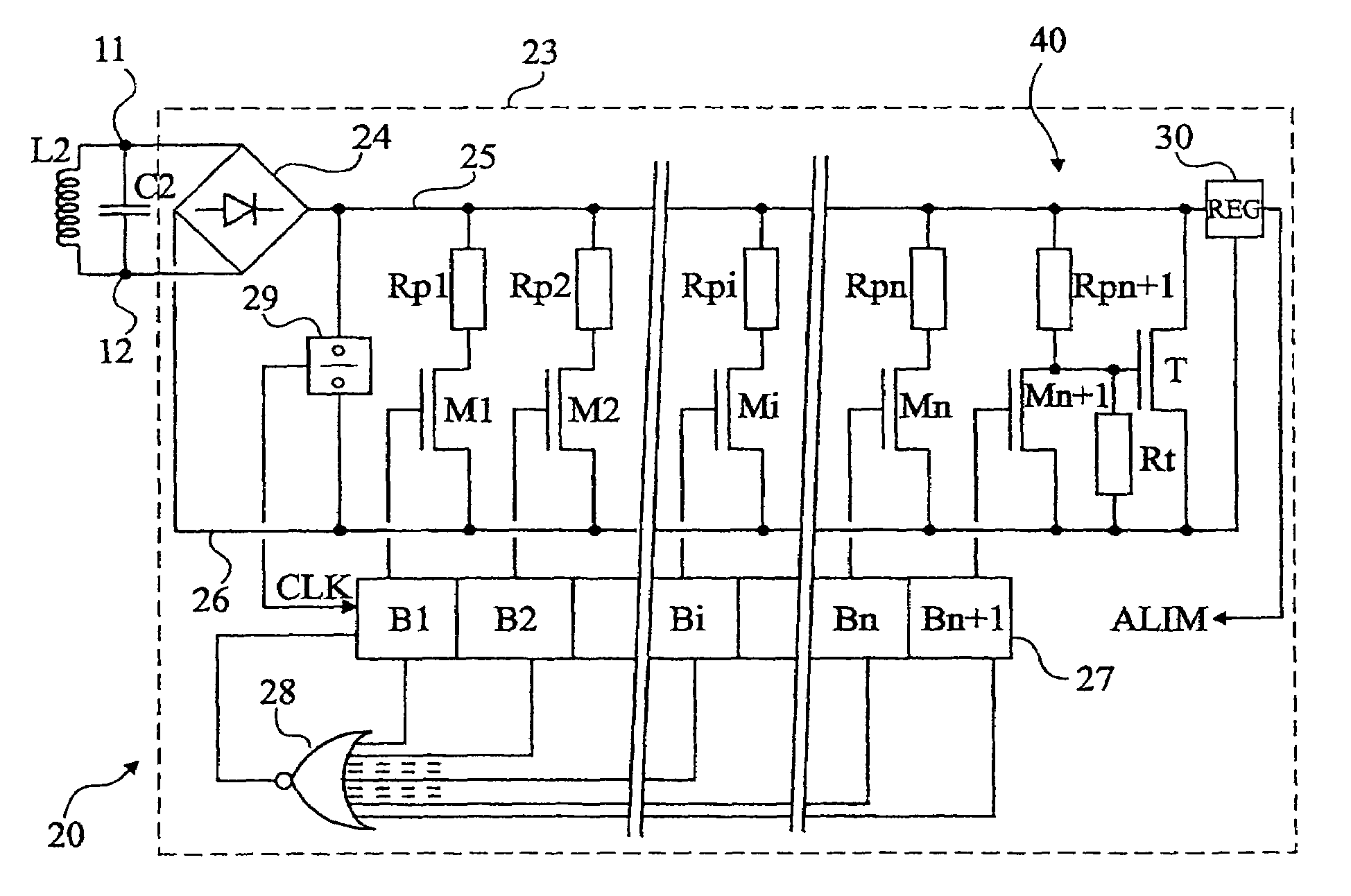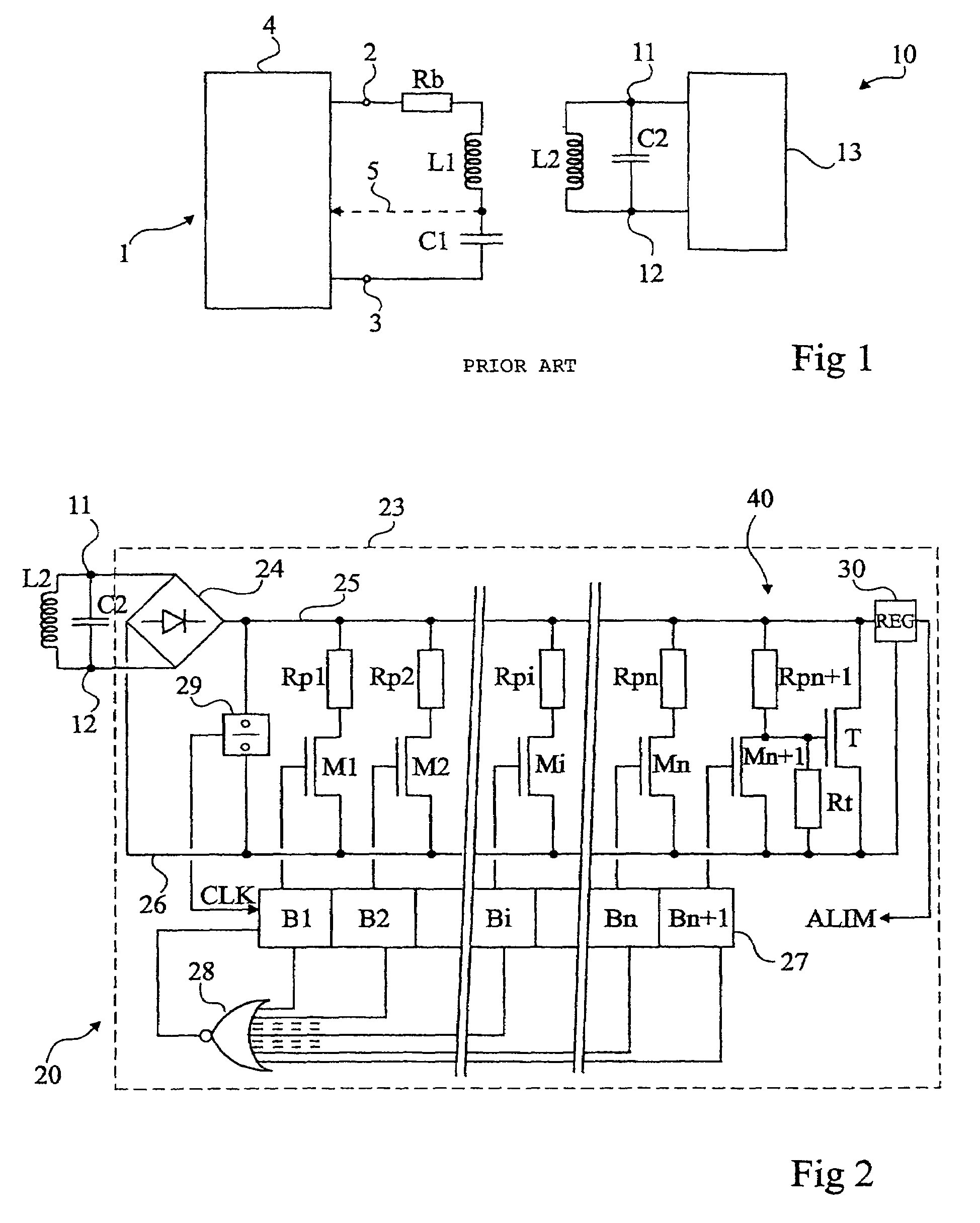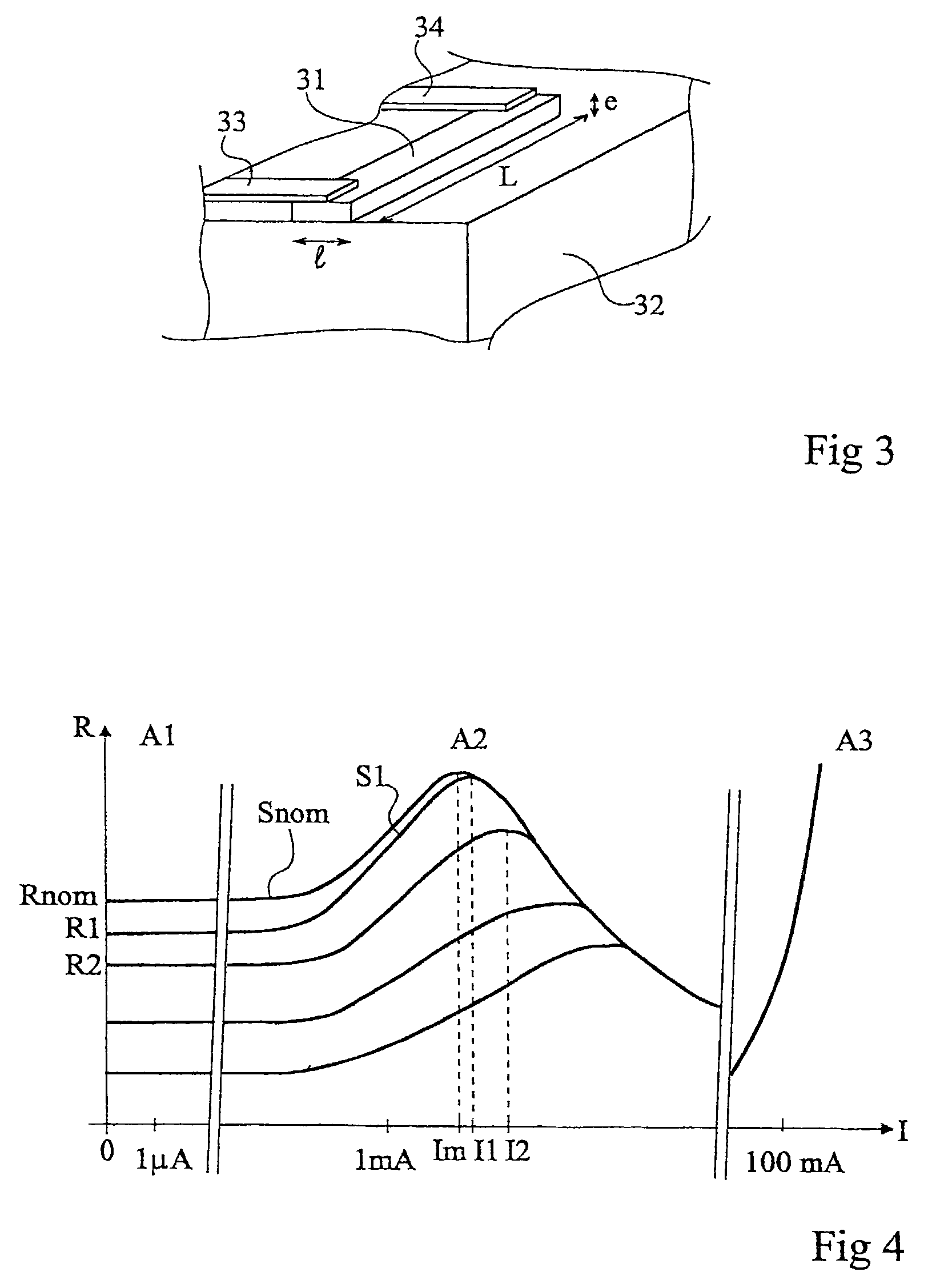Programmable-code electromagnetic transponder
a transponder and programmable code technology, applied in the field of electromagnetic transponders, can solve the problems of complexity adversely affecting the miniaturization and cost of present transponders, binary code, exorbitant operation price, etc., and achieve the effect of overcoming the disadvantages of conventional transponders
- Summary
- Abstract
- Description
- Claims
- Application Information
AI Technical Summary
Benefits of technology
Problems solved by technology
Method used
Image
Examples
Embodiment Construction
[0045]Same elements have been referred to with same references in the different drawings. For clarity, only those elements necessary to the understanding of the present invention have been shown in the drawings and will be described hereafter. In particular, the different circuits of reading and exploitation of the data recovered by a read-write terminal have not been detailed. The present invention may be implemented whatever exploitation is made of the data.
[0046]A feature of the present invention is to use, as the storage element of data to be transmitted, directly the resistance value of a back modulation element formed of a switch in series with a resistor. Thus, according to the present invention, several back-modulation elements are provided in parallel with the oscillating circuit to modify its load. Another feature of the present invention is that the resistances of the different elements have different values according to the state (for example, 0 or 1) of the code portion...
PUM
 Login to View More
Login to View More Abstract
Description
Claims
Application Information
 Login to View More
Login to View More - R&D
- Intellectual Property
- Life Sciences
- Materials
- Tech Scout
- Unparalleled Data Quality
- Higher Quality Content
- 60% Fewer Hallucinations
Browse by: Latest US Patents, China's latest patents, Technical Efficacy Thesaurus, Application Domain, Technology Topic, Popular Technical Reports.
© 2025 PatSnap. All rights reserved.Legal|Privacy policy|Modern Slavery Act Transparency Statement|Sitemap|About US| Contact US: help@patsnap.com



